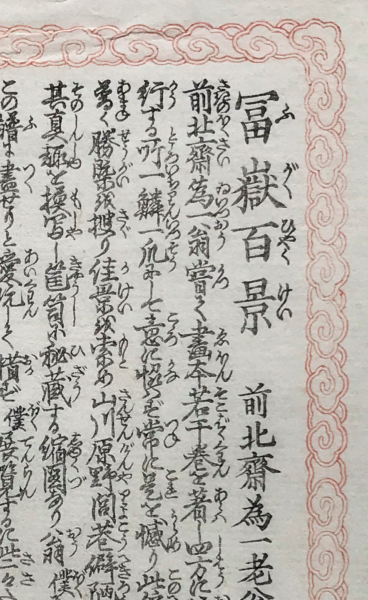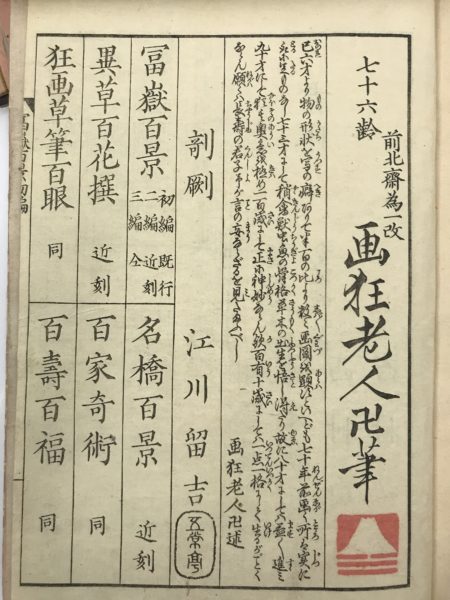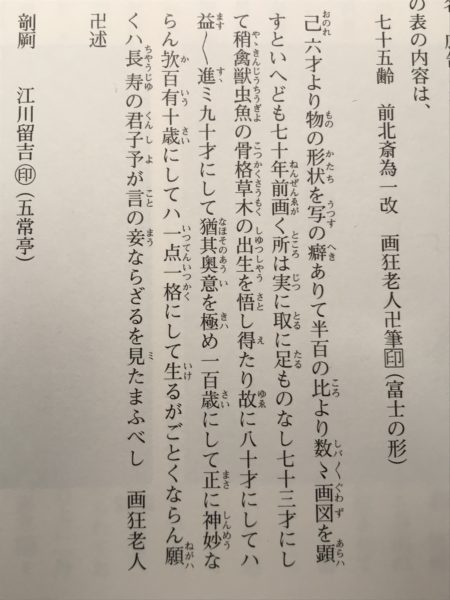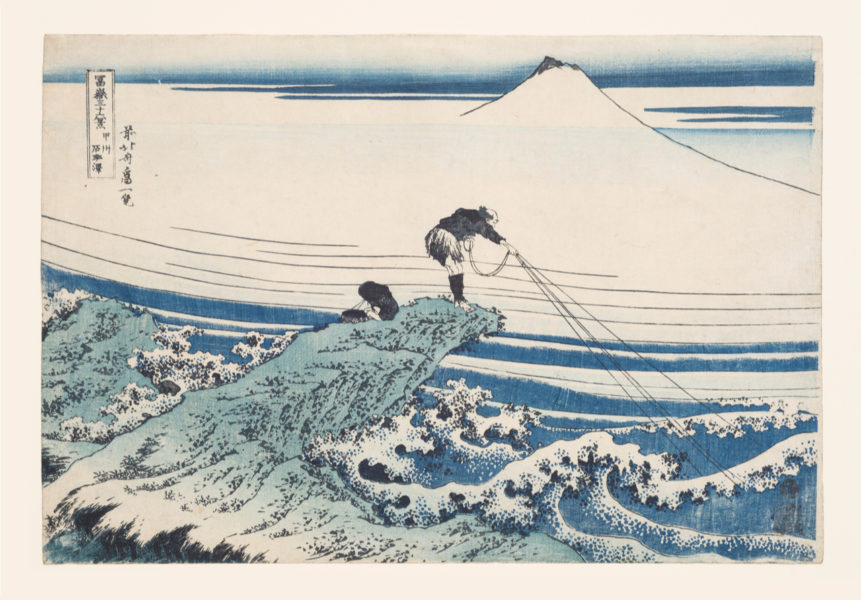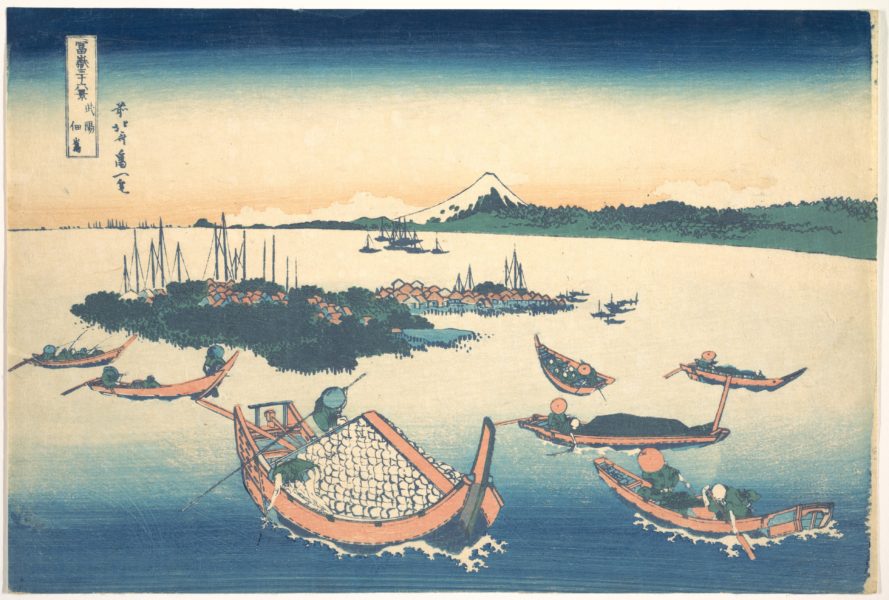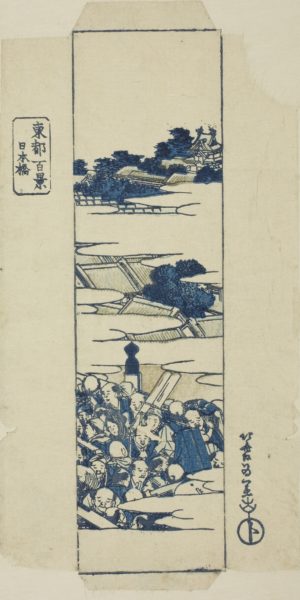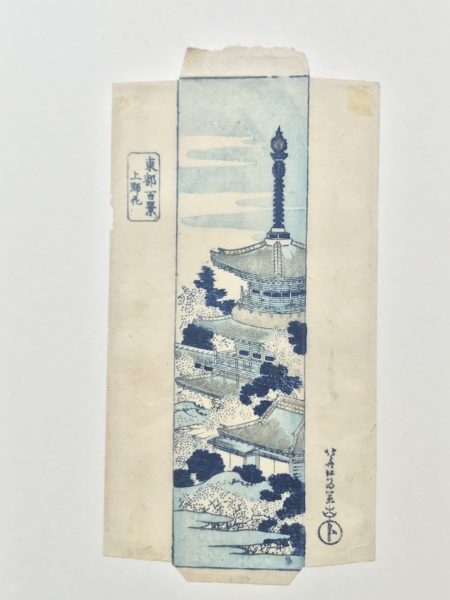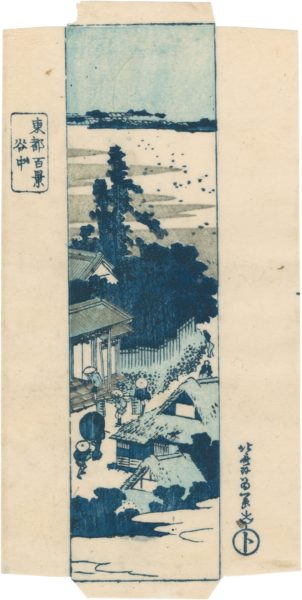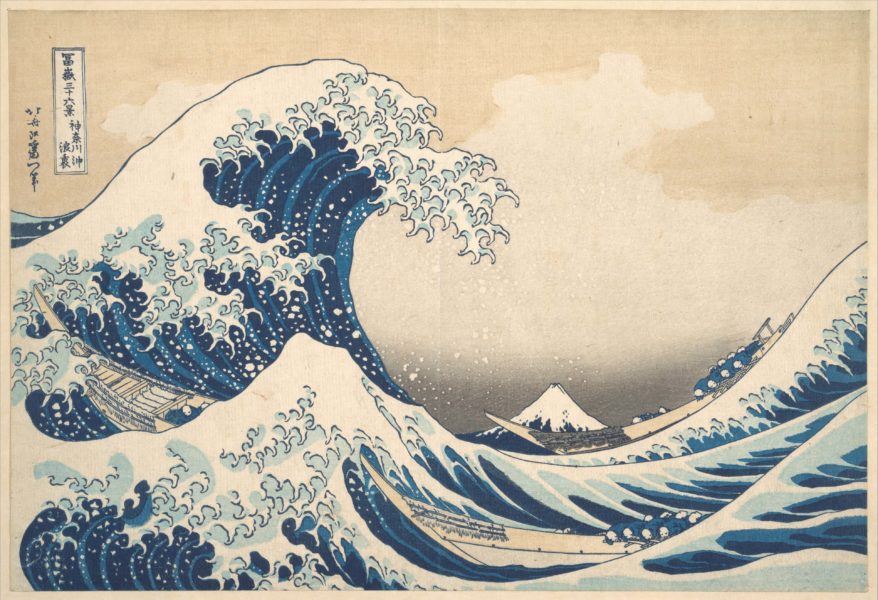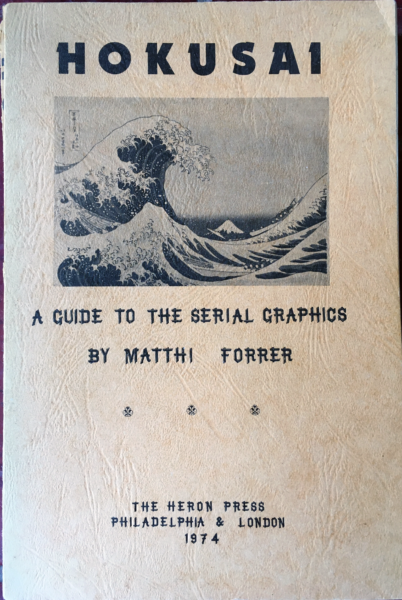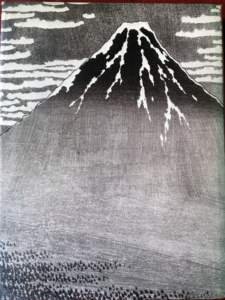Or is it The Hague? From the rather typical buildings in Hokusai’s scheme of Western perspective that he includes in his Hokusai manga volume 3 of 1815, it is quite obvious that his original inspiration was some European optical print. From the 1730s, the Dutch introduced such prints, produced in London (most by Robert Sayer, Henry Overton, and Carington Bowles), Paris (Chéreau, Daumont, and Basset), and Augsburg (G.B. Probst), in quite large numbers in Japan, where they met with an eager audience. When they reached Edo, they helped Okumura Masanobu develop his so-called ‘perspective views,’ ukie 浮絵, of the interiors of the kabuki theatre and views of the main street of the Yoshiwara pleasure quarters around 1739, and later also of other subjects. Although he himself always denied this, the young painter Maruyama Ōkyo 1733-1795 is believed to have made quite a number of Japanese views in this manner for some Kyoto merchant of toys who also sold the necessary apparatus to view these ‘perspective views’ best.
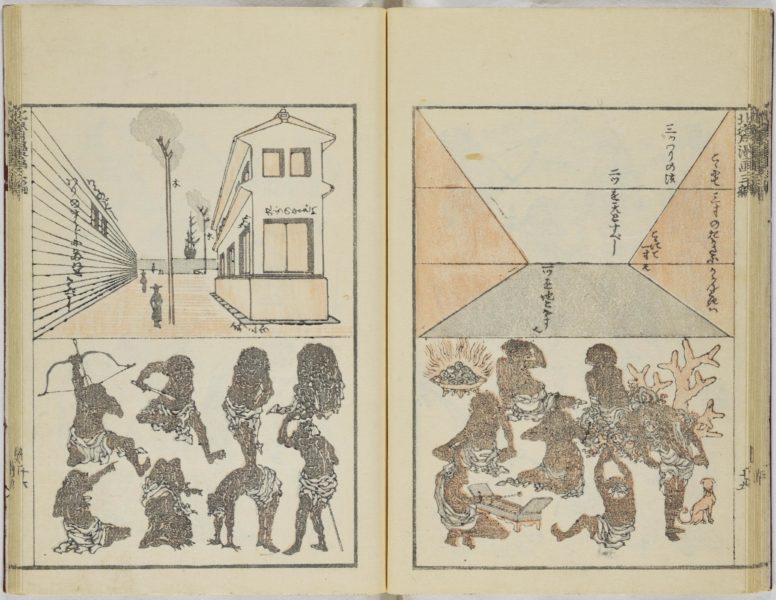
I always imagined that Hokusai based his scheme of the Western principles of perspective on some Japanese print and figured that Utagawa Toyoharu’s Perspective view of a harbour in the Southeast of Holland, Ukie Oranda tōnan minato no zu (浮繪和蘭陀國東南港圖) would be the most likely example. Hokusai would then have viewed the Toyoharu print through a zograscope, the apparatus that we can also see in some Harunobu print (see the 2002 Chiba City Museum Harunobu exhibition catalogue, no. 134), which gives a mirrored image. He then used one of the buildings and just two of the trees. This would have sufficed for his immediate purpose of making a scheme that would just show the converging lines towards a vanishing point on the horizon, as is seen on the right-hand page.
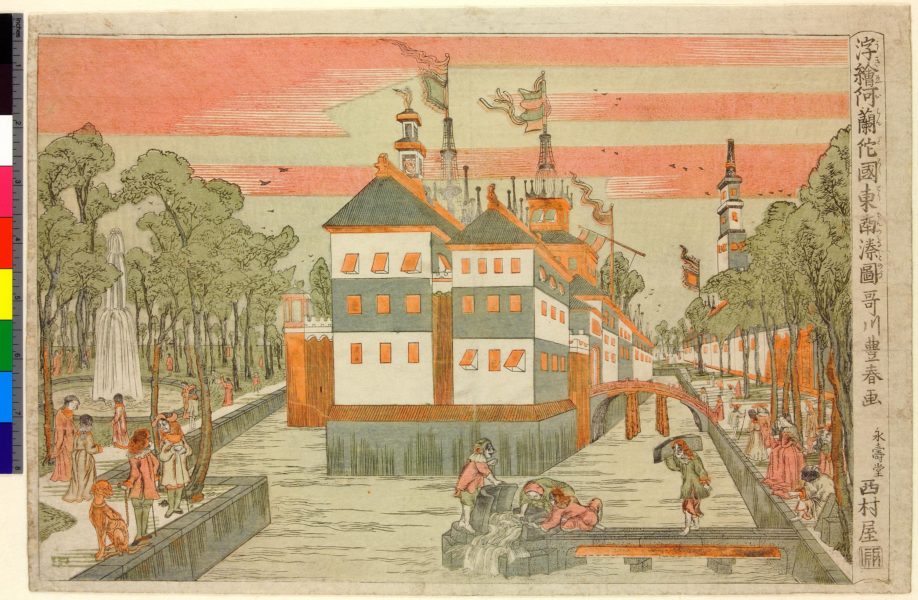
To the right in that diagram, he specifies that ’When you start here with a height of three inches’ (koko nite sansun no takasa ni kakan toki ha こゝにて三寸のたかさにか々んときは) to continue at the first line that ‘this is then one inch’ (koko nite issun nari こゝにて一寸也). He then goes on, from top down, explaining ‘The rule of dividing into three’ (mitsuwari no hō 三ツわりの法), which means that ‘You should make the sky two’ (futatsu wo ame to subeshi 二ツを天とすべし), and then ‘the earth becomes one’ (hitotsu wo chi to nasu nari 一ツを地となす也). And the earth is thus printed in grey, whereas the top two horizontal bands, making up the sky, are left blank.
On the left-hand page, Hokusai demonstrates how this would work, drawing a simple scene of a two-storey building, two trees, three figures, and a ship on the horizon. On the front of the house, he notes that ‘the windows are nine tenths’ (kyūbun no mado ha 九分のまどは), whereas they are only ‘three tenths’ (sanbun 三分) on the side, and by the trees he just adds the word ‘tree’ (ki 木). The set of converging lines to the left have the notes ‘what painting looks like’ (kaku no gotoshi かくのごとし) and ‘you should paint in accord with the lines’ (wari no suji ni awase kakubeshi わりのすじにあわせかくべし). Especially from the trees and the standing figures, it becomes clear that we see objects that are nearby larger than those more distant.
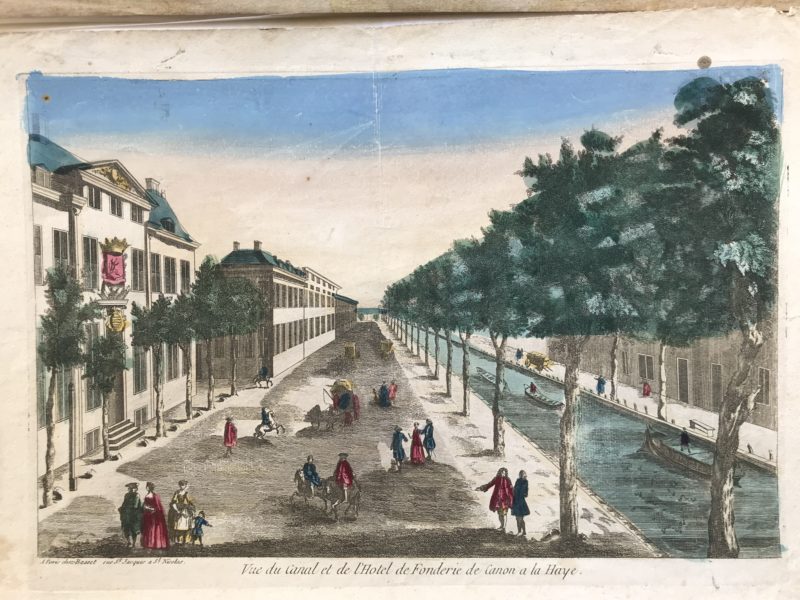
Then, apart from the circumstance that we do have some rivers but no harbours in the southeast of the country, the question, of course, remains what did Toyoharu take as his example. Until recently I imagined that he would have been familiar with the print of a View of the canal and the municipal cannon foundry of The Hague, Vue du Canal et de l’Hotel de Fonderie de canon a la Haye, published in Paris by Basset at the rue St Jacques à St Nicolas. Until 1660, cannons were founded at the Kloosterkerk, a church indeed, on the Mauritskade at The Hague and the canal was specifically made around 1580 so as to transport the cannons to other cities in the provinces of Holland and West Frisia. Later, the foundry was moved to a new and impressive building on the Nieuwe Uitleg, designed by Pieter Post (1608-1669), and that is the building in this print. But then, there is a rather wide sidewalk along the foundry and the other buildings further down, with quite some people on it, then the row of trees, and only then the canal. But Toyoharu’s print has water both to the right and to the left of the row of buildings. For Hokusai’s view this wouldn’t matter. For the sake of making a clear and directly understandable diagram, as said above, he just needs one building to the right, then the sidewalk with only three persons, and he reduces the row of trees to only two.
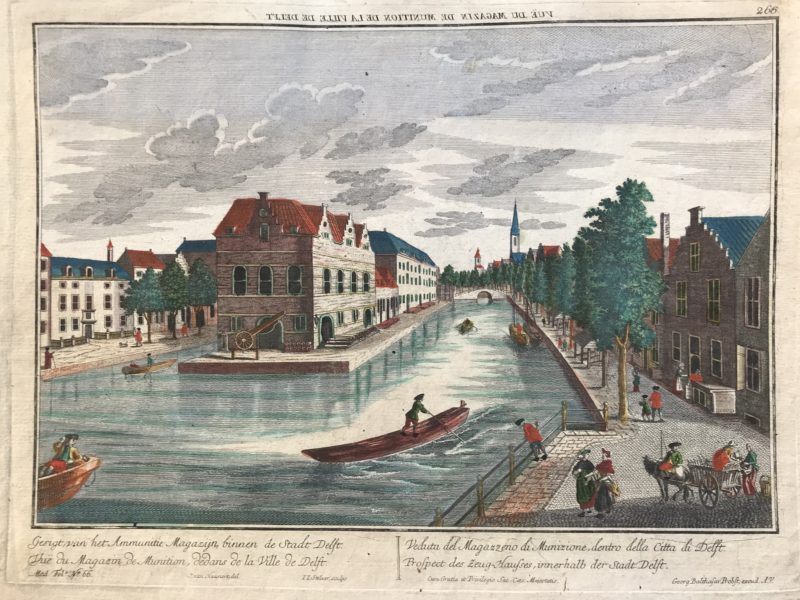
Recently, I found some optical print with a View of the Munition Depot of the City of Delft, Vuë du Magazin de Munition de la Ville de Delft, designed by the Delft painter Isaac van Haastert (1753-1834) and made into a copperplate by Johann Jacob Stelzer (1706-1780), published by Georg Balthasar Probst (1732-1801) of Augsburg. As this has the water of the river Schie split into two and streaming on both sides of the central buildings, it seems more plausible to associate this view with the Toyoharu print. The ‘Munition Depot’ or Armamentarium, the building figuring conspicuously in the centre, dates from 1601 and still survives today, almost in its original form, with the Lange Geer to the right and the Oude Delft to the left—as it is, the printed image is not mirrored. Its location is near the Rotterdam and Schiedam city gates as well as nearby the former city timberyard for the Delfshaven harbour. The view incorporates an arched bridge in the distance and the tower of the old city hall, both surviving today, that we also can see somewhat adapted in the Toyoharu print.
I must now add that this identification of the Armamentarium as the source for the Toyoharu print was already earlier made by Oka Yasumasa in his Meganee shinkō. Tokyo: Chikuma Shobō, 1992, 172 (岡泰正、『めがね絵新考』東京:筑摩書房) — though not associating the plate with Hokusai’s diagram. Anyway, I should have checked that book which I have, much earlier, of course.
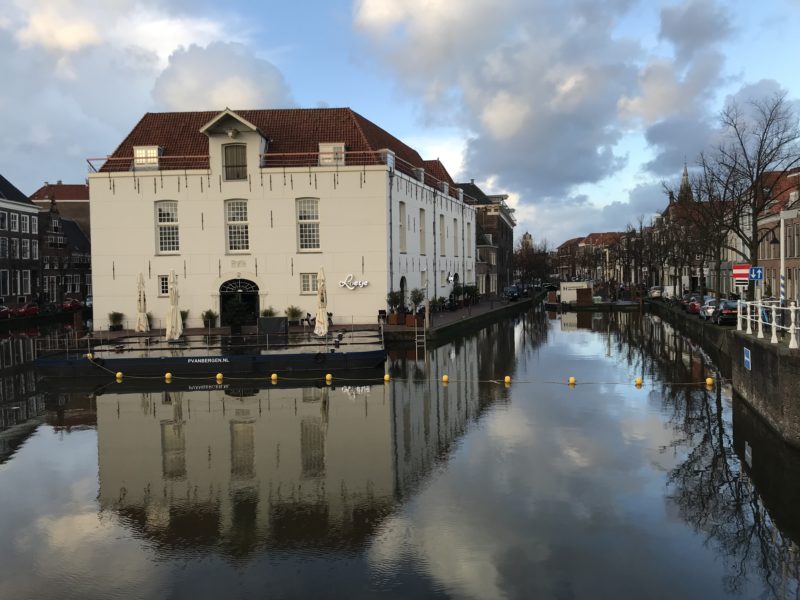
So what did Hokusai see? If it was the Toyoharu print, he at least must have viewed it through a zograscope to get the building to the right and the trees to the left, and making the canal into a sidewalk. And the ‘harbour’ mentioned in the title would have inspired him to include a ship on the horizon. If it were the View of the canal and the municipal cannon foundry of The Hague, the sidewalk was there already and he must have viewed it through a zograscope to have the building to the right and the trees to the left. Moreover, he just focused on one building only and just two trees. And if he by chance had an opportunity to look at the print of the View of the Munition Depot of the City of Delft, again through his zograscope, the prominent position of the building would probably make this a more likely example to come to his composition that just served to illustrate the principles of Western perspective. Anyway, as for the Hokusai perspective diagram, it will remain a problem to definitively associate this with what its model was. For Toyoharu it seems most likely that it was the Delft view designed by Van Haastert. As for Hokusai, we cannot totally ignore the view of the The Hague foundry, but also the Delft view cannot be ruled out.
What remains is the group of South Sea Islanders in the lower half of this double-page composition. This is not merely a confirmation that we are here dealing with foreign subjects or influences, there is more to be said on them, but that has to wait for some next time.
